Life style
The sinking of SLNS Weeraya and Jagatha

After decades-long tour of duty on the waters, Weeraya and Jagatha – two ships of the 3rd Fast Gun Boat Squadron of the SL Navy, have now found their new home on the seabed off the port of Trincomalee. While they continue to prove their mettle enriching the deep waters as fish breeding grounds and shipwreck diving sites, those who manned them recollect fond memories on board.
by Randima Attygalle
Weeraya and Jagatha translate into ‘hero’ and ‘conqueror’. These ships of the 3rd Fast Gun Boat Squadron of the SL Navy lived up to their names ensuring the security of the Sri Lankan waters during wartime. Weeraya joined the fleet in 1972 when Rear Admiral D.V Hunter was at the helm of the Royal Ceylon Navy and Jagatha in 1980 during Rear Admiral A.W.H Perera’s tenure as Commander.
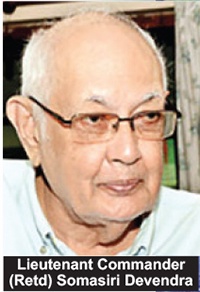 During the 30-year war, these ships were in the frontline fighting arms smuggling and terrorist activities in the seas off the Karainagar Island. Having played their part, Weeraya and Jagatha bid goodbye to the men above the waters, settling down on ‘Davy Jones’ Locker’ off Rocky Point in Trincomalee a few weeks ago. They were both soon to turn 60.
During the 30-year war, these ships were in the frontline fighting arms smuggling and terrorist activities in the seas off the Karainagar Island. Having played their part, Weeraya and Jagatha bid goodbye to the men above the waters, settling down on ‘Davy Jones’ Locker’ off Rocky Point in Trincomalee a few weeks ago. They were both soon to turn 60.
The ceremonial decommissioning of the two vessels at the Naval Dockyard in Trincomalee a few weeks ago was presided over by the Navy Commander, Vice Admiral Nishantha Ulugetenna. In keeping with naval custom, the decommissioning was carried out with the seal of approval of the President. The decommissioning ceremony ended with the paying off pennants (long pennants equivalent to the lengths of each ship) ceremonially scissored into equal parts and the individual pieces distributed as souvernirs among the ships’ crew in the time-honored naval traditions. The decommissioning ceremony was also attended by Rear Admiral (Retd) J.T.G. Sundaram (as a guest of honour) who commanded Weeraya from January 1, 1980 to January 25, 1981 as its sixth Commanding Officer.
Manufactured in 1961 in China, Weeraya was one of the first of two gunboats (FGBs) to be added to the fleet of the then Ceylon Navy in 1972 as one of Her Majesty’s Ceylon Ships (HMCyS). Until the arrival of this vessel, the Navy had only one ship- a Frigate called Gajabahu and many unarmed small boats,
Lieutenant Commander (Retd) Somasiri Devendra, an authority on maritime archaeology, says: “When the Insurgency of 1971 erupted we were without any seaward defenses and had to call upon Indian and Pakistani ships to patrol our waters and throw a cordon around us. The Chinese offer of two reconditioned FGBs- (Sooraya and Weeraya as they were renamed later) was welcome.”
The ships gifted by China in early 1972 were commissioned a few months later. Commissioning, as Devendra explains, is the act of empowering a vessel to act as a self-sufficient unit of the Navy under a Commanding Officer. The ships were launched by the Prime Minister who was the then head of the government and the country’s chief executive. Devendra who was in Kochchikade when the Sooraya and Weeraya arrived as deck cargo on a Chinese merchant vessel recollects his first glimpse of them wrapped in bamboo matting. “They were a class of ships designed for use in rivers – those rivers were much bigger than anything we have. At sea, their buoyancy would have increased. They had several engines and were heavily armed. They were tested as seagoing craft by us and several problems encountered were put right with our inputs.”
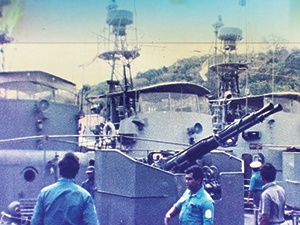 Soon, Sooraya and Weeraya were joined by three more Chinese counterparts. “When these three arrived, a ‘nationalist’ minded officer decided to pander to then Prime Minister, Sirimavo Bandaranaike by suggesting that the five FGBs have names starting with S,W,R,D and B. This resulted in the names Sooraya, Weeraya, Ranakami, Dakshaya and Balawatha!” says Devendra. The Chinese teams accompanying the ships remained here for several weeks after the handover.
Soon, Sooraya and Weeraya were joined by three more Chinese counterparts. “When these three arrived, a ‘nationalist’ minded officer decided to pander to then Prime Minister, Sirimavo Bandaranaike by suggesting that the five FGBs have names starting with S,W,R,D and B. This resulted in the names Sooraya, Weeraya, Ranakami, Dakshaya and Balawatha!” says Devendra. The Chinese teams accompanying the ships remained here for several weeks after the handover.
“All the manuals, signage, etc. on board was in Chinese only. The first local crew made use of their stay to get all of them translated as the Chinese team had very good Sinhala speaking interpreters who had learned the language at one of our state universities.”
After the ships started patrolling it was found that given the tight Navy Vote, it was very expensive to run them at maximum capacity. Nevertheless, some of them did undertake cruises to the Maldives, notes Devendra.
The decommissioning ceremony of the Weeraya and Jagatha, Rear Admiral (Retd) J.T.G. Sundaram who commanded Weeraya as its sixth Commanding Officer, says was the “first ceremony of such scale and pageantry.” This senior officer who graced the occasion as a guest of honour lauds it as a fitting tribute to the two pioneer vessels. “Before the onset of the conflict, the role of the Navy was largely that of surveillance which gradually shifted to an operational one. Weeraya and Jagatha were among the vessels which had to adapt to this transformation.”
Light House Relief Operations servicing the Little and Great Basses Lighthouses in the South and patrolling in the Northern seas were some of the notable surveillance exercises for which the Weeraya was responsible before she took on operational duties, says Sundaram.
Jagatha in the mid-80s, was a notable platform for cadet sea training, Sundaram, who was also a training commander on board said. “Both these vessels underwent mid-life refit in the mid-1980s for which Chinese personnel arrived here.” Before a ship is decommissioned, the exercise known as ‘de-storing’ takes place explains the Senior officer. “All weapons, engines, propellers, shafts, electronic and electrical equipment, fuel and lubricants are removed in this process.” Once de-storing is complete, scuttling of the ship begins by allowing water to flow into the hull.
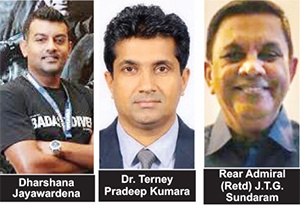 “Sailing during South West monsoon along the southern seas especially along the stretch between Hambantota and Tangalle passing Great Basses and Little Basses were the acid tests that a junior rating or a cadet had to prove his sea legs,” recollects a top-ranking retired naval officer. Fondly looking back on his days spent in the Gun Room of Jagatha as a young cadet in 1985, he adds, “the kitchen (galley) was using diesel fuel and the food had an eternal diesel flavour! The single toilet was not sufficient to cater to the larger crew; hence a Thunder Box was installed at the stern of Jagatha!”
“Sailing during South West monsoon along the southern seas especially along the stretch between Hambantota and Tangalle passing Great Basses and Little Basses were the acid tests that a junior rating or a cadet had to prove his sea legs,” recollects a top-ranking retired naval officer. Fondly looking back on his days spent in the Gun Room of Jagatha as a young cadet in 1985, he adds, “the kitchen (galley) was using diesel fuel and the food had an eternal diesel flavour! The single toilet was not sufficient to cater to the larger crew; hence a Thunder Box was installed at the stern of Jagatha!”
The Shanghai class ships – Jagatha and Weeraya were the “best teeth the navy had to bite in late 70s and 80s”, reflects the senior officers who adds with a chuckle that today cadets will certainly make a mockery out of seven- point gun drill what was a ritual prior to a gun being fired. “It was ‘The Gun’ that the LTTE most feared tangling with,” he adds.
Out of the Jagatha’s four engines, two were in the forward engine room and used only when high speed was required. Their roar at high RPM was not at all ear-friendly, he recounts. “The Crow’s Nest was a cage like contraption on the top of the lattice mast and slacking cadets or those caught for being too smart were banished up there as punishment
“Sailing through the Karainagar channel into the Elara naval base at Karainagar, passing Fort Hammenhiel without running aground, was a skill mastered by the then commanding officers and Master-at-Arms who were at the rudder of the vessel, he notes.
The Dumping Permit Regulations made under the Marine Pollution Prevention Act require the sanction of the Marine Environment Pollution Authority (MEPA) for any decommissioning of a vessel and this was obtained prior to the sinking.
“True to MEPA’s vision of realizing a healthy coastal and ocean environment for future generations, we welcome shipwrecks which promote fish breeding places and shipwreck diving which spurs awareness and future interventions in terms of sustainability. We are conscious that such wrecks are not detrimental to the marine life,” remarks Dr. Terney Pradeep Kumara, General Manager of MEPA. Any decommissioning of a ship, he explains, should be authorized by MEPA. “A dumping permit is issued for sinking of any vessel once the authorities are satisfied that all pollutant-agents such as oil, lubricants and non-degradable material is removed from it.”
The open gangways of a shipwreck are a haven for both the fish and the diver alike says the Marine Ecologist. “While wrassers, groupers, larger snappers and morays thrive in these places, they also enable divers to swin through these passages.”
Ship wrecks as the Tec-Diver and underwater explorer, Dharshana Jayawardena explains, could be a boon to fisheries and tourism. “From a fisheries perspective, the correct location and depth is important. The currents in the location will determine how well-nourished the wreck will be with coral larvae floating in water that will settle to make an artificial reef; also once it is a reef, how much nutrients will be available for its sustenance will also count. The least pollutants in the location, the better the reef will turn out to be.”
Wrecks also act as safe havens for shoaling fish to hide during day time. It is important that these locations can be easily accessed by recreational divers. “If not its value for tourism won’t be as much. In addition, the location should have good water clarity most of the time,” notes the technically precise diver with a wealth of experience diving into decommissioned ships both locally and overseas. The two decommissioned gunboats lying close together in the Trincomalee Harbour, the Chevron glass gunboat off the shores of Moratuwa, the wreck of We Ling that was sunk with several bullet-proof VIP cars onboard in Negombo and several decommissioned vessels in the Maldives sunk for the purpose of creating artificial reefs for the Maldivian tourism industry are among such diving pursuits of his.
A few kilometers away from the Jagatha and Weeraya’s resting place in Rocky Point, off Trincomalee, lie remains of several aircraft, decommissioned navy gun boats and also one of the largest wrecks in the world – the Admiralty Floating Dock 23. But marine tourists are not allowed to access these as they are within the harbour environs, says Jayawardena.
A ship sold for scrap will yield a one-time, short-term dividend, a ship sunk as an artificial reef will provide dividends for over 100 years as an abundant fishing ground and also give back millions of dollars in foreign revenue to the country from the tourist divers who come to visit the wreck, notes the explorer.
- News Advertiesment
See Kapruka’s top selling online shopping categories such as Toys, Grocery, Flowers, Birthday Cakes, Fruits, Chocolates, Clothing and Electronics. Also see Kapruka’s unique online services such as Money Remittence,News, Courier/Delivery, Food Delivery and over 700 top brands. Also get products from Amazon & Ebay via Kapruka Gloabal Shop into Sri Lanka.
Life style
LUXASIA aims to lead luxury beauty’s growth in Sri Lanka
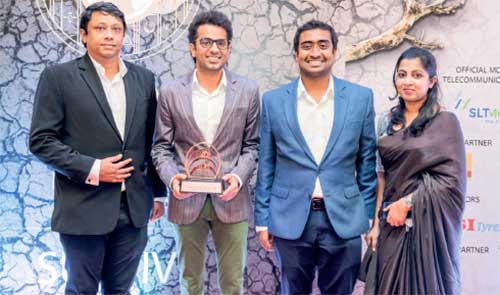
Sri Lanka is a land renown for stunning natural beauty. Yet, LUXASIA still managed to usher in a different kind of beautiful to the market through its expertise in luxury beauty retail and omni-distribution.
In November 2019, LUXASIA unveiled its inaugural classy beauty counters at Odel, One Galle Face. Since then, it has brought enchanting fragrances from luxury brands such as Burberry, Calvin Klein, Gucci, and Marc Jacobs, as well as trendy skincare from KORA Organics to beauty-lovers in an exquisite and captivating retail format.
Now, having successfully overcome the challenges in 2020 imposed by COVID-19 and related lockdowns, LUXASIA is ready and excited to thrill Sri Lankan consumers again. This time, it is with the launch of both skincare and make-up collections from the prestigious Japanese beauty brand, Shiseido. Arriving with a glamorously magnificent pop-up at One Galle Face from 8 to 14 February 2020, LUXASIA promises to bring memorable consumer experiences and a feast for the eyes that showcases the best in Japanese beauty.
Leading up to this pop-up, LUXASIA partnered the Key Opinion Leaders (KOLs) and top influencers of Sri Lanka to excite the beauty community with a sneak peek of what Shiseido have to offer. This campaign garnered more than 100,000 social interactions, with over 1.2 million social media impressions, piquing consumers’ fascination in Shiseido’s award-winning and best-selling serum, The Ultimune Power Infusing Concentrate.
Looking ahead into 2021, LUXASIA aims to continue delighting consumers with even more fresh retail innovations to spice up the luxury beauty scene in Sri Lanka. Soon, fragrance enthusiasts can expect a unique pop-up of all the scents that Luxasia carry, featuring new launches from Davidoff and Calvin Klein, as well as other interesting novelties. Beauty-lovers can also expect more limited edition products and gifts-with-purchases, interesting workshops, as well as seasonal offerings in the coming months. Concurrently, LUXASIA also aspires to continue grooming the Sri Lankan beauty community through more entertaining collaborations with KOLs throughout 2021.
LUXASIA sees immense potential in Sri Lanka’s fast-growing beauty market and has been its voice in the international beauty industry. For some time now, LUXASIA has been relentlessly reaching out to numerous luxury beauty brands across to world to interest them in Sri Lanka. While it is encouraging to see the first-fruits, LUXASIA is aiming much higher. Forging ahead, LUXASIA strives to champion and lead the growth of luxury beauty in Sri Lanka, through even more partnerships with great brands, and by continuously delighting consumers.
Life style
Newly published guide opens many windows on whale watching
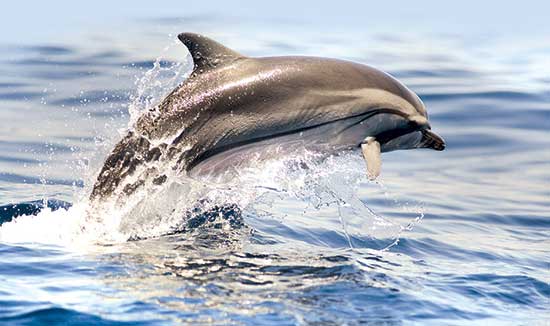
by Ifham Nizam
Shipping lanes to the south of Dondra pose the threat of ships colliding with whales as the area has very rich marine life which also attracts whale watching boats, says prolific wildlife writer and photographer Gehan de Silva Wijeyeratne, author of the recently published ‘A Naturalist’s Guide to the Mammals of Sri Lanka’.
He says international shipping industry organizations have written to the government to push back the existing shipping lanes and if no action is initiated, there is the danger of whale watching boats colliding with vessels.
Dr. Susannah Calderon and her colleagues at the University of Ruhuna have recommended the shipping lanes be moved 15 nautical miles south. The cost impact to all concerned will be negligible, but it significantly improves safety at sea, especially at night when the sea is dotted with the lamps from hundreds of small fishing crafts in the path of giant container carriers.
“It is primarily a safety issue though an important secondary impact will be that it reduces fatal collisions with whales, while generating favourable publicity for the government of Sri Lanka. It boils down to moving the shipping lanes further south and saving lives, Wijeyeratne stressed in an interview with The Sunday Island.
Asked what’s special about his latest publication, he said: “This is the first photographic field guide which covers nearly all of the mammals found in Sri Lanka. It covers 96 per cent of the land and marine mammals. The book, which is portable and affordable, also contains a large number of images from 40 photographers which are practically useful in the field to identify  a mammal to species level. It also covers a number of small, discrete, nocturnal mammals whose existence that even many local wildlife enthusiasts will not be aware of.”
a mammal to species level. It also covers a number of small, discrete, nocturnal mammals whose existence that even many local wildlife enthusiasts will not be aware of.”
On the book’s coverage of the marine mammals, Wijeyeratne said there are two noteworthy aspects. Firstly, it covers all the species recorded in Sri Lankan waters expect for one, the Omura’s Whale. This will be included in a second edition. Secondly, it uses images of the whales and dolphins (cetaceans) which will show the animals the way a whale watcher will see them on the surface.
Artwork that shows the whole animal is important, but in field conditions, they are often of limited value to identify cetaceans which only show a little of their upper body in sections at a time they surface.
Q: You were the first to publicize that Sri Lanka was the best location for Blue Whale sightings and offered the best chance to see a superpod of Sperm Whales. Can you explain briefly how you set about branding Sri Lanka as a top international destination for whale watching?
A:
I started with field work to ascertain the facts and launched a media campaign initially with Jetwing Eco Holidays and Jetwing Hotels which was supported over many years by the Sri Lanka Tourism Promotion Bureau (SLTPB) and others in the media and tourism business. I have published 37 articles on whale watching in Sri Lanka. The first, in May 2008, was pivotal as it boldly stated that Sri Lanka was best for Blue Whales. This set everything in motion. My articles give due credit to many people who were a part of this amazing story. This includes Dr. Charles Anderson who first told me it would be feasible to see Blue Whales from the South.
A Belgian millionaire philanthropist who prefers to remain anonymous and helped create the infrastructure for whale watching by 13 tsunami affected fishing youth who set up Mirissa Water Sports and Sue Evans who was important for connecting all of us and Anoma Alagiyawadu (the Jetwing Lighthouse Naturalist) whom I tasked with collecting the initial data for the Encounter Rates I publicized in the media.
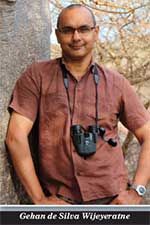 Remarkably, no Sri Lankan marine biologist played any role in publicizing whale watching in the early years. However, soon after, they benefited by being thrust into the media spotlight by film crew researchers who had read the publicity which began with my various widely disseminated articles. Having read them, and sometimes after conversations with me, the film crews and the press came to Sri Lanka and incorporated local marine biologists into their story.
Remarkably, no Sri Lankan marine biologist played any role in publicizing whale watching in the early years. However, soon after, they benefited by being thrust into the media spotlight by film crew researchers who had read the publicity which began with my various widely disseminated articles. Having read them, and sometimes after conversations with me, the film crews and the press came to Sri Lanka and incorporated local marine biologists into their story.
At the time I broke the first story, I do not think any of the local marine biologists had even one image of a Blue Whale of a publishable standard or had any idea that Sri Lanka was the best place in the world to see Blue Whales. Hopefully, the increased profile of local marine biologists has made it easier for them to raise the funds needed for their important research.
Q: Did the Sri Lanka Tourism Promotion Bureau help your efforts with publicity and branding?
A:
Yes indeed. At the start of the publicity campaign, we produced a series of informative and attractive publications designed by Chandrika Maelge. These were printed and distributed at key consumer and travel trade fairs such as the Bird Fair, WTM and Destinations where a number of important press and tour operators were informed about Sri Lanka being a good place for whales. At some of the press drinks events in London hosted by Jetwing Eco Holidays, around 35-45 press people would attend. These events were held in collaboration with the London Office of the SLTPB.
In some years, As many as three of these press events were held allowing personal interaction with a wide pool of media people. Another important and later development is the role played by Nalin Perera who ran the SLTPB office in London for several years and attended many consumer and travel trade fairs. I had developed media briefs for him which he would print and distribute. In one conversation, he estimated that he had printed and distributed over 10,000 copies of this material.
There were others who also disseminated my stories to the international press; a notable example being Chitral Jayatilake who shared my publicity pdfs with various wildlife documentary makers he invited to Sri Lanka.
Q: Did everyone readily embrace your ideas?
It took a couple of years. I remember even into the second year of the publicity campaign there were doubts from the big companies in tourism.
I remember Srilal Miththapala who was then President of The Hotels Association of Sri Lanka speaking to me and joining a celebrity whale watching event I was leading with Shyamalee Tudawe. This was organized by Olivia Richli of the Amangalla in Galle.
Srilal wanted to report back to the association if there was any truth to the claims being made by me about how easy it was to see Blue Whales. On the coastline, the people running small guesthouses readily embraced the story as tourists who were reading my stories turned up with copies of my articles and asked for boats to take them whale watching. The international press also readily took it on as I provided credible data.
Q: What do you say to criticisms that whale watching needs better regulation?
I agree on the need for better regulation and higher standards. The tourism industry has played its part in publicizing whale watching. Other state agencies also need to step up their efforts to regulate the industry in a way that is good for the welfare of the animals and provide a good visitor experience.
Q: What do you expect ‘A Naturalist’s Guide to the Mammals of Sri Lanka’ to achieve?
I would like people to understand that there is still a lot to be discovered about Sri Lanka’s mammals and I hope this portable and affordable guide will find its way into the hands of local naturalists and inspire more research and more practical steps to conserve habitats and species.
Life style
Modern Brides and Grooms collection by LOVI Ceylon and friends

Brides and Grooms of Sri Lanka – Reimagined
“Together we’re creating moments of happiness and cherished memories for the new couple and their families” said Founder and CEO of LOVI Ceylon, Asanka de Mel, as he introduced LOVI Ceylon’s Groom collection. Each groom’s look was paired with extraordinary creations from Sri Lanka’s top bridal designers, jewelers, florists, hair and make-up artiste and was captured by story-telling photographers.
The presentation graciously hosted by the Taj Samudra and Shangri-La hotels saw 30 leading designers working hand in hand to infuse fresh ideas, celebrate cultural diversity and show-off Sri Lankan couture—the island’s hand craft heritage.
The stunning bridal costumes were painstakingly made by renowned designers Messrs. Dhananjaya Bandara, Rishard Raheem, and Michael Wijesuriya as well as Mses. Indi Yapa Abeywardena of Brides by INDI, Sonali Dharmawardena, Darshi Keerthisena of Buddhi Batiks, Ramona Oshini, Sandani Perera of IKIGAI Bridal, and Jaish Parathalingam of Aashkii. The newcomer, Ms. Anusha David also presented her couture creations under the label Gabriel.
“We want our Groom and all of the men in the wedding including the groomsmen, dads, young boys and friends, to be themselves–to feel rooted in culture, well dressed and at ease on the wedding day,” says Asanka. Celebrating the religious and cultural traditions including Buddhist, Christian, Hindu, Kandyan, Malay, Muslim, Sinhala, Tamil and western traditions of the island LOVI Ceylon’s Grooms’ range presented modern sarongs paired with formal shirts, jackets, kurtas and more. They were paired with sarees, dresses, lehengas, pant suits and an array of breathtaking outfits. There were many looks offered for the Sri Lankan diaspora, as well as couples seeking inspiration for destination weddings.
As the designs progressed from sketch to stitching, our jewelry partners Careems, Lalitha, Mallika Hemachandra, Tiesh and Vogue jewelers added their brilliant sparkles with handcrafted fine jewelry made of precious metals encrusted with diamonds, sapphires and rubies. And what wedding would be complete without flowers? Bringing the latest floral creations were florists Designer Flowers, Flowers by Joan and Karen Forbes, Lassana Flora, and Supreme Flora who made the spectacular bridal outfits blossom with their creations.
Breathing life into these wonderful creations with superb hair and make-up was anchor of the shoot, Ms. Nadiya Fernando and her collaborator Omesh, while Ramani Fernando Salons, Shane Perera, Viran Peter, Brides by Leena and Talia designs, also worked magic on the models.
The father son duo Dinuka and Dineth Fonseka of Studio3000 took on the herculean task of capturing all the creations as the anchor photography partner. The works of Ashene Bernard, Amarante Studio, Geeshan Bandara, and Portrait Culture were also presented in imaginative and artistic captures.
De Mel expressed his thanks to the wonderful models who brought the visions and fancies of the designers to life, as well as poet and author Ashok Ferrey for being the MC of the shoot and providing an eloquent commentary, delivered with his inimitable panache!
“We have world class craftsmanship here, it’s fun to work with so many experts, who just happen to be friends, to present a beautiful collection that could nudge the course of Sri Lankan clothing identity” said Asanka when asked about the work that went into this.
As he rightly reminded the gentlemen to choose wisely, “on that special wedding day, when all eyes are on her–her eyes are on you!”









